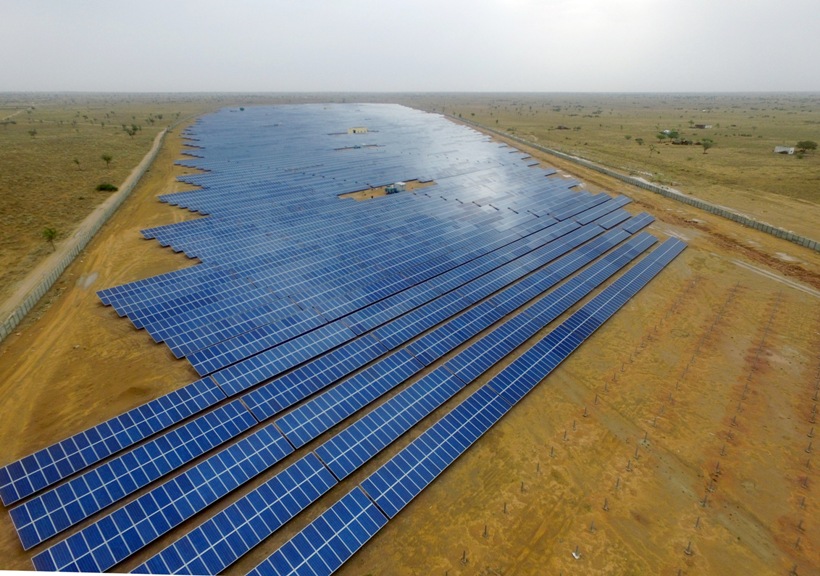At the launch of TERI’s new report, ‘Renewable Power Pathways: Modelling the Integration of Wind and Solar in India by 2030’, the power minister R.K. Singh said that India has the fastest growth rate in the world in renewable energy
India can integrate more than 30 per cent of wind and solar in its power system, while still maintaining security of supply and without raising the total economic costs of its electricity system, according to a new report by The Energy and Resources Institute (TERI). The report also identifies a number of strategies to achieve this.
The report, titled ‘Renewable Power Pathways: Modelling the Integration of Wind and Solar in India by 2030’, was launched on July 21, 2020, along with the report titled ‘Bending the Curve: 2025 Forecasts for Electricity Demand by Sector and State in the Light of the COVID Epidemic’ by R.K. Singh, Honourable Minister of State (IC) of Power and Renewable Energy, and Minister of State, Skill Development and Entrepreneurship, Government of India.
The minister said India is transforming its energy sector and is happy to engage with the challenge. He added, “We are aiming to make our thermal capacity flexible, almost 55 per cent in the first stage and gradually extend it to the entire capacity. All our demand growth will be met by renewable energy. We are balancing the grid through hydropower. We are looking at growing capacity from floating solar. There have been innovative bids for meeting peak demand, for round the clock electricity, and for storage, all of which will bring prices down.”
The report launch, which was followed by a technical discussion, was part of the ‘Virtual Sustainable Action Dialogue on Energy Transition’, a pre-event of the World Sustainable Development Summit, TERI’s annual flagship event that is to be held in February 2021.
The report identifies a number of strategies that are required to accommodate the growth of variable renewables and allow for the achievement of India’s mid-term renewables targets. Its key findings are:
- By 2030, India can achieve generation shares of variable renewables like wind and solar greater than 30 per cent, and shares of total zero carbon generation including large hydro and nuclear greater than 45 per cent
- This can be achieved at no extra system cost, provided that a comprehensive portfolio of options is deployed in order to increase the flexibility of the power system. Absent this, India will not be able to achieve its 2030 objective of raising the generation capacity of renewables to 450 GW. It is time to shift the high-level focus of policy from the achievement of capacity targets, to the transformation of the operations and investment in the power sector required to integrate VRE. Something of the nature of a ‘National Power System Flexibility Mission’ is the need of the hour, otherwise India’s renewable energy ambitions may falter.
- In the mid-term to 2030, the majority of power system flexibility will need to come from the conventional generators, in particular the coal and hydro fleet. India has a substantial coal fleet, which, by varying its output across the course of the day, can provide significant flexibility to integrate VRE. Additional supply-side flexibility comes from the dispatchable hydro fleet, i.e. those plants with reservoir, pondage, or pumped storage.
- In the mid-term, battery storage and coal flexibility are complementary, with batteries reducing the operational stress of the coal fleet. With the cost of battery technologies falling extremely rapidly and combined VRE and battery projects delivering competitive tariffs, it would be beneficial to define targets and policy frameworks for battery storage out to 2030.
- India’s power system already benefits from the largest synchronous power grid in the world. The high level of interstate grid integration is driven by the strong presence of the federal level in India’s power system value chain and policy and regulatory frameworks. The further development of this integrated grid is essential to increasing the share of variable renewables. Shifting power from areas of excess renewables production to areas of high demand, and vice versa during times of deficit renewables production, is an essential strategy to drive greater penetrations of variable renewables.
- Additional investment in coal-fired power beyond the current pipeline would be neither necessary from a system adequacy point of view nor financially justified, given the rapid cost declines in renewables plus storage and broader grid integration strategies.

